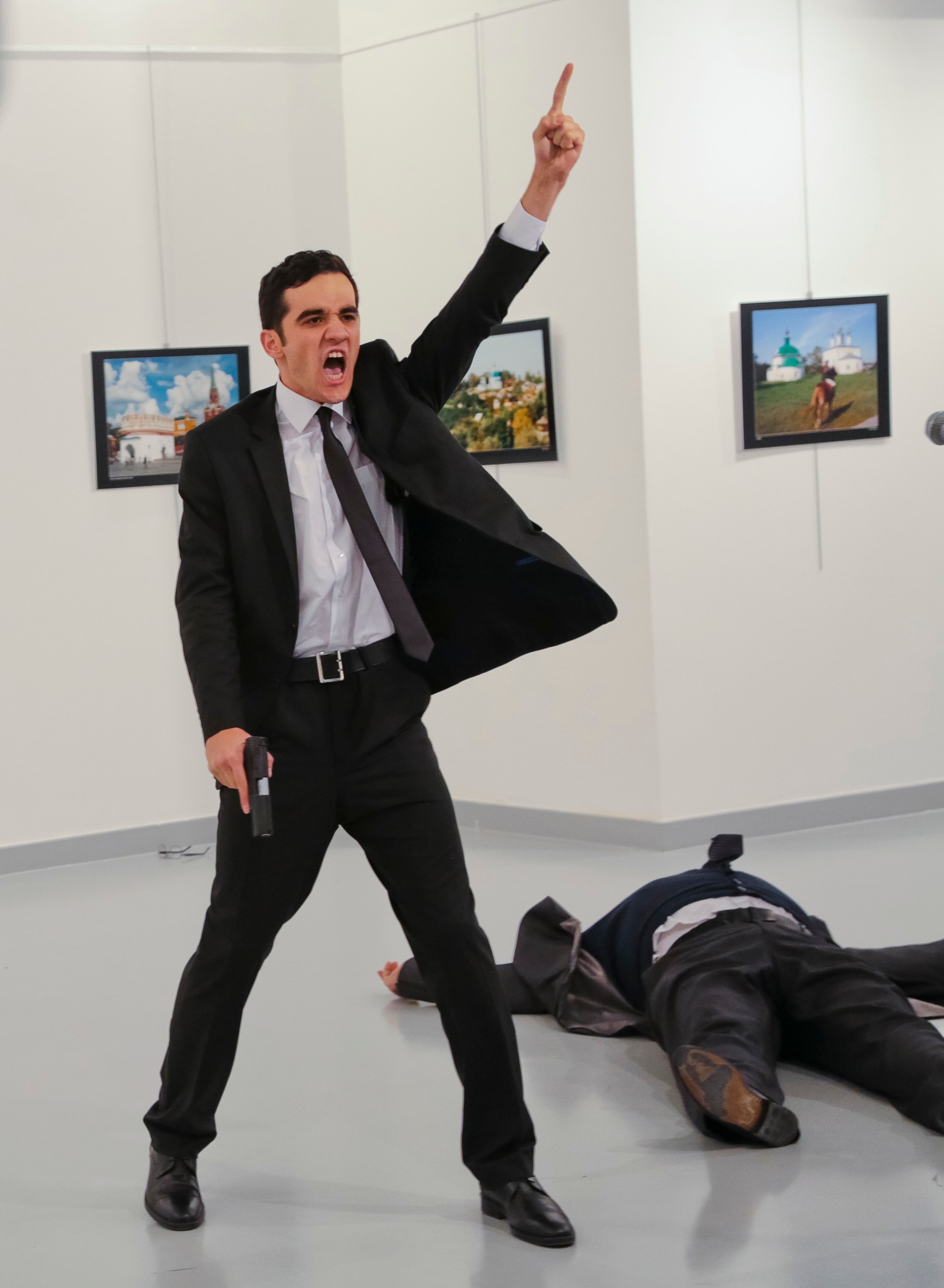
The slender man standing behind the Russian ambassador wore the black suit, slim tie and lapel pin that is the uniform of Turkey’s plainclothes security details––the dark-haired men who travel, often in bunches of a dozen or more, with any person deemed important enough to protect in the republic. As Moscow’s envoy to Turkey, Andrey G. Karlov certainly qualified, and nothing appeared the least out of place in the Ankara gallery where he was speaking on Monday evening, until the supposed guard pulled out his pistol.
“I thought it was a theatrical flourish,” said Burhan Ozbilici, the Associated Press photographer who kept his lens trained in front of him as the gunman fired into the ambassador’s back. “Guests ran for cover, hiding behind columns and under tables,” the photographer told his agency. “I composed myself enough to shoot pictures.” The result was an instantly iconic image. The photo shows the angry assassin, clad in the unofficial uniform of the secular Turkish state, with his pistol in his right hand and a righteous left hand pointing toward heaven. “God is Great,” he shouts in Arabic. “Those who pledged allegiance to Muhammad for jihad. God is great!” Then, in Turkish: “Don’t forget Aleppo!” he hollers, naming the city that, thanks to the Russian air power, had only days earlier fallen to the forces of Syrian President Bashar Assad. “Don’t forget Syria! Step back! Step back! Only death can take me from here.”
Death did take him, when Turkish special forces police “neutralized” the assailant after a 15 minute gun battle. He was identified by the official police ID found in his pocket; Reuters said he had been off duty at the time of the attack. It was not immediately clear whether there had been other casualties. Nor were the political implications of the assassination readily grasped, except by the tortured logic of the region: Turkey and Russia actually support opposite sides in the Syrian war, even as they maintain genial bilateral relations themselves. The exhibit opening where Karlov died was, in fact, called “Russia Through Turks’ Eyes.”
But sometimes a bulletin communicates a great deal. And the first, stark image from Ankara carried an essential new truth from a conflict whose front line keeps creeping further into neighboring states: Nothing is simple here. And less and less can be trusted.
More Must-Reads from TIME
- Donald Trump Is TIME's 2024 Person of the Year
- Why We Chose Trump as Person of the Year
- Is Intermittent Fasting Good or Bad for You?
- The 100 Must-Read Books of 2024
- The 20 Best Christmas TV Episodes
- Column: If Optimism Feels Ridiculous Now, Try Hope
- The Future of Climate Action Is Trade Policy
- Merle Bombardieri Is Helping People Make the Baby Decision
Contact us at letters@time.com